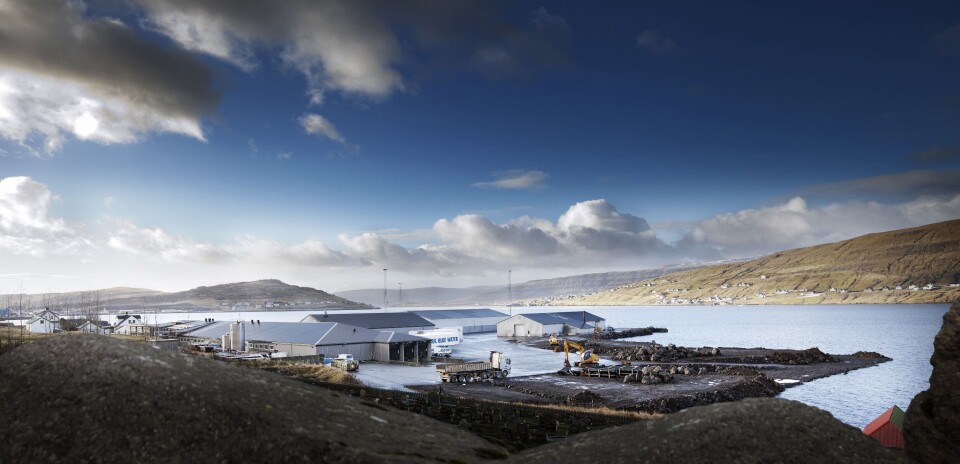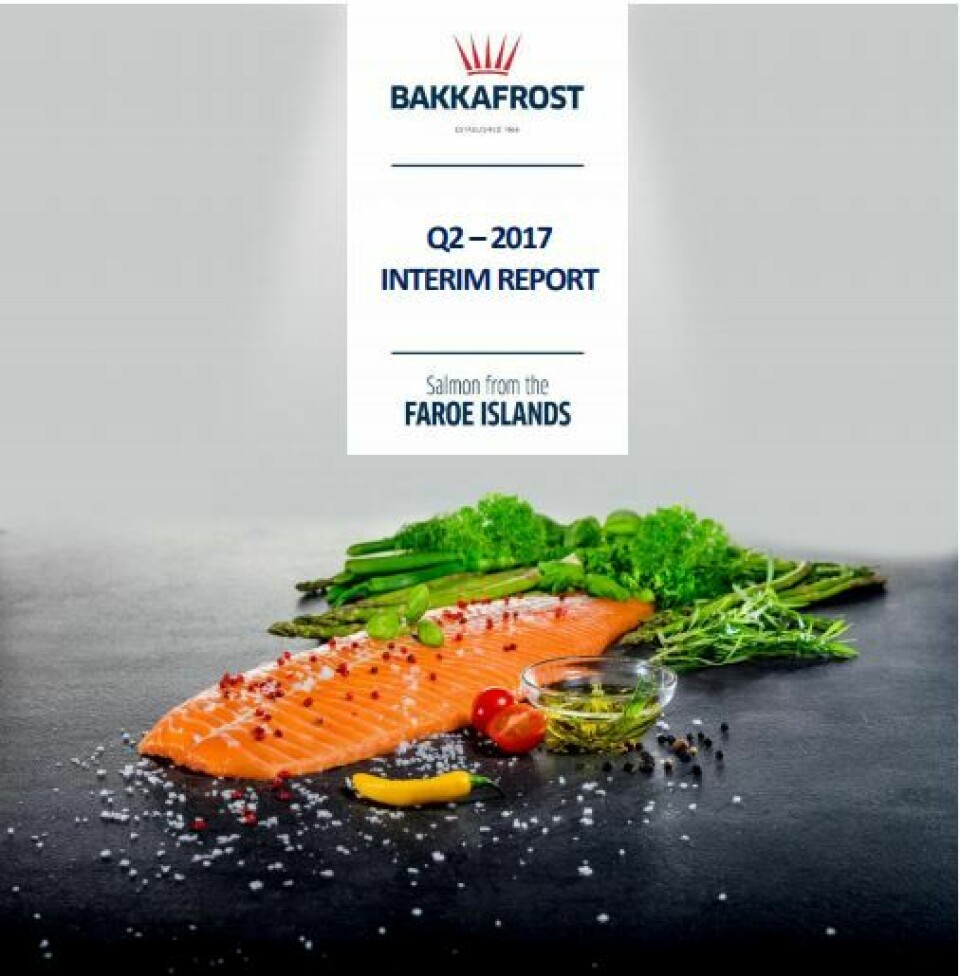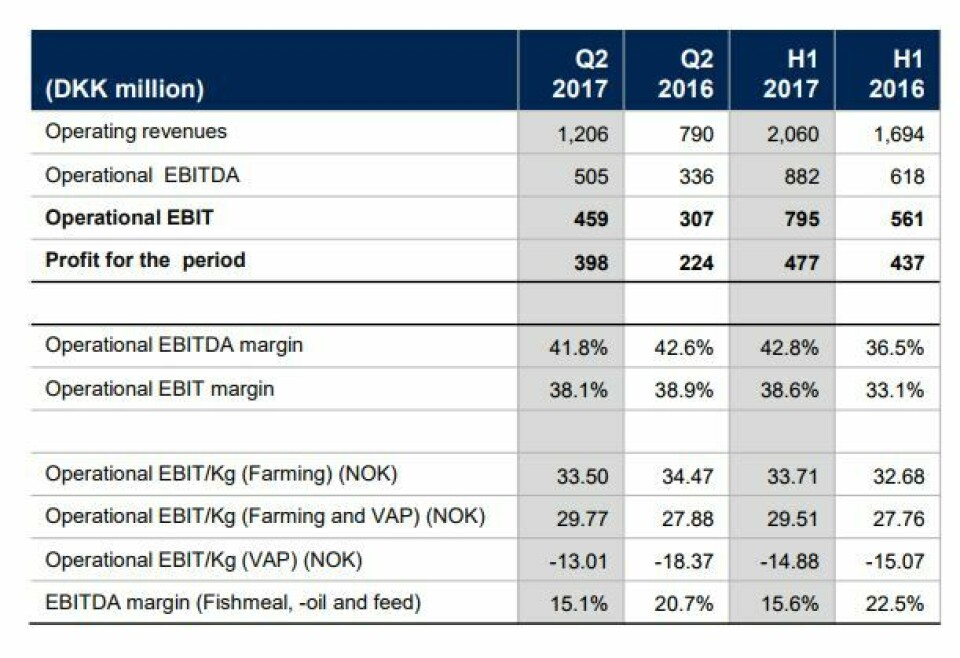
Bakkafrost Q2 earnings leap to £56.5m
Faroes fish farmer Bakkafrost made earnings before interest and tax (EBIT) of 459.2 million Danish crowns (£56.5m) in the second quarter of 2017, a substantial increase over the same period last year, when EBIT was DKK 307 million.
Harvested volumes were 18,400 tonnes gutted weight, up from 13,004 tonnes in Q2 2016. Bakkafrost expects to harvest 53,500 tonnes gutted weight in 2017.

Bakkafrost’s combined farming and value-added products (VAP) segments made an operational EBIT of DKK 435m. The farming segment made an operational EBIT of DKK 489.5m.
In its Q2 2017 report, Bakkafrost said that while record high levels of salmon spot prices were a positive for the farming segment, it meant the VAP segment – tied in to fixed-price contracts of between 6-12 months - made an operational loss of DKK -54.5 million.
The earnings before interest, tax, depreciation and amortisation (EBITDA) for the fishmeal, oil and feed (FOF) segment was DKK 47.8m.
Bakkafrost transferred 1.9 million smolts in Q2, and its feed subsidiary, Havsbrún, sourced 163,100 tonnes of raw material. An increase in catch quotas of blue whiting and a recommended rise for herring and mackerel quotas, means production of fishmeal and fish oil will most likely increase.
The major market for Havsbrún´s fish feed is the local Faroese market including Bakkafrost’s internal use of fish feed. Havsbrún’s sales of fish feed in 2017 are expected to be at 85,000 tonnes.

Bakkafrost chief executive Regin Jacobsen said: “Bakkafrost’s three segments had all a very high activity level in the second quarter of 2017. Havsbrún received a record high volume of 163,100 tonnes of raw material. The farming segment harvested a record high volume of 18,400 tonnes gutted weight, and the VAP segment produced 5,300 tonnes gutted weight. Bakkafrost focuses on raising a sustainable premium quality salmon with emphasis on animal welfare and on preserving the environment. In May 2017, farming site A-71 Funningsfjørður was ASC certified, and Bakkafrost aims to have all its farming sites ASC certified in 2020.”
The company expects the global supply of Atlantic salmon will rebound from decline in H1 2017 to an increase of around 8-10 per cent in the second half of 2017.
Its Q2 report continues: “The latest update from Kontali Analyse estimates the global supply of Atlantic salmon to increase around 2 per cent in 2017, compared to -6 per cent in 2016.
“The market place is one of Bakkafrost’s most significant risk areas. To diversify the geographical market risk, Bakkafrost sells its products to all the largest salmon markets in the world, USA, the Far East, Europe and Russia.”

More sold in Europe
Europe bought 46 per cent of Bakkafrost’s fish in Q2 2017, up from 39 per cent in Q2 2016. Eastern Europe also took a greater share of the Faroese firm’s production, up from 17 per cent to 22 per cent.
The USA decreased from 23 per cent to 16 per cent, and Asia decreased from 21 per cent to 16 per cent.
Bakkafrost invested in a service vessel, M/S Martin, which uses lukewarm seawater treatment against sea lice, late last year, and is adding a second vessel, M/S Róland. The boat is equipped with the same system as M/S Martin and is expected to start operation next month. Bakkafrost is also increasing the use of lumpfish.
Bakkafrost is in the second year of a five-year investment plan worth DKK 2.2 billion, which is intended to maintain a cost-conscious value chains, carry out organic growth, increase flexibility and reduce biological risk. It has centralised processing operations to increase efficiency.




















































